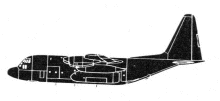Incident Overview

Description
The Twin Otter crashed into the Ba¡a Ana Chaves, two miles offshore during a training flight. Having departed from runway 11 at S?o Tom Airport at 18:22 UTC, the first two touch-and-goes were carried out normally. The third manoeuvre began at 18:37 and during the climb phase, the aircraft unexpectedly began an excessively tight turn into the left downwind leg of the approach and at an altitude of approximately 600 feet it crashed into the sea. CONCLUSION The Commission of Inquiry has concluded that the causes that contributed to the accident are as follows: – Excessively tight turn and low altitude for the tailwind – Late realisation by the crew of the abnormally serious attitude that would be experienced by the aircraft – Late reaction by the crew to a situation that was already complicated
Primary Cause
Excessively tight turn and low altitude for the tailwind, late realisation by the crew of the abnormally serious attitude that would be experienced by the aircraft, and late reaction by the crew to a situation that was already complicated.Excessively tight turn and low altitude for the tailwind, late realisation by the crew of the abnormally serious attitude that would be experienced by the aircraft, and late reaction by the crew to a situation that was already complicated.Share on:



